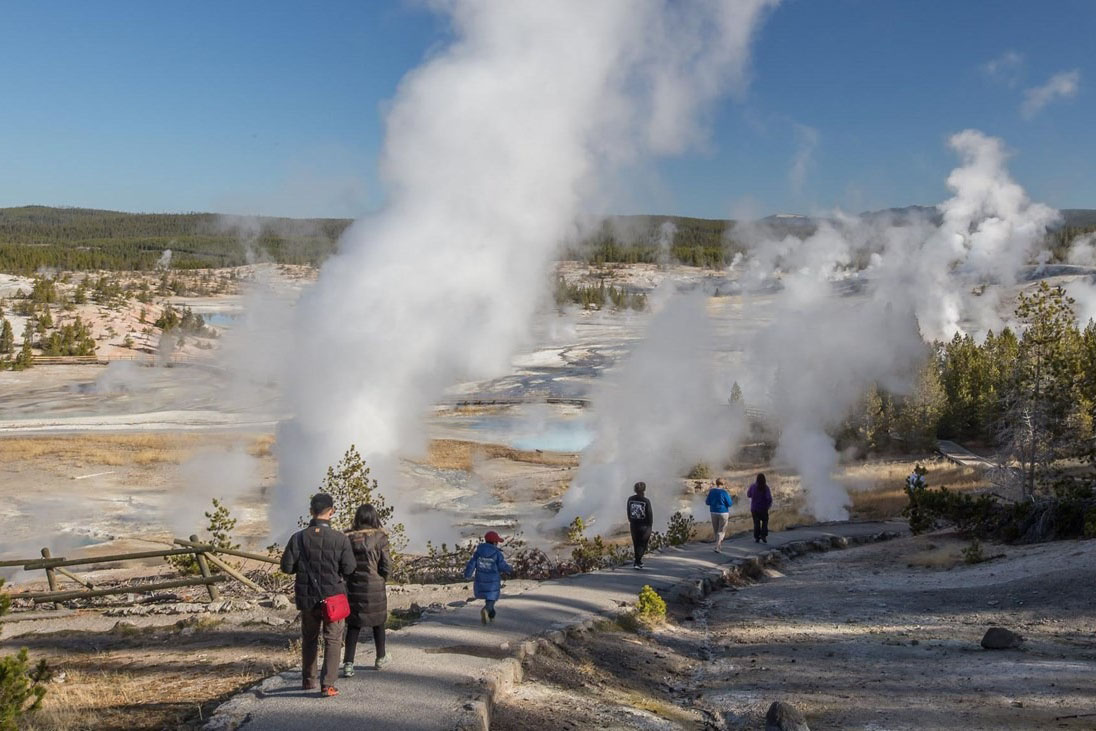Yellowstone National Park has always been a hotbed of geologic chaos. Now, it has a fresh wound to prove it. In the Norris Geyser Basin, a series of hydrothermal explosions carved out a new 13-foot-wide, light blue hot spring. Park scientists discovered the feature on April 10, 2025, during a routine temperature survey.
Yellowstone is far from dormant. Beneath the surface, superheated water and steam are constantly shaping and reshaping the landscape.
Park scientists discovered the new feature on April 10, 2025, during a routine temperature survey. What they found was a steaming, silica-rich pool where just a few months earlier there had been nothing but bare ground. It is a vivid example of how quickly the Earth’s raw power can create something striking and entirely new.
A Slow Burn
This wasn’t a single, violent eruption. Instead, the pool emerged over several months of small, steam-driven blasts. According to the U.S. Geological Survey and Yellowstone Volcano Observatory, the timeline was pieced together using satellite imagery, acoustic sensors, and field surveys.
Photos showed that in October 2024, there was nothing but bare ground. By early January, a shallow depression had formed. By mid-February, the basin had filled with warm, silica-rich water that gives the pool its distinctive baby blue color.
What the Science Says
These types of explosions happen when superheated water gets trapped beneath the surface. When the pressure gets too high, the water flashes into steam, forcing the ground to rupture and eject rock and mud.
This event was relatively modest compared to others in the park. Scientists didn’t detect seismic signals, which usually show up during more forceful eruptions. Most of the debris consisted of small rocks and sediment that landed close to the pool’s edge.
Acoustic sensors recorded low-level signals on December 25, January 15, and February 11. This pattern suggests the explosions happened gradually over several weeks rather than all at once.
Specs of the New Feature
By the time researchers arrived at the site in April, the pool had fully formed. The water temperature was measured at around 109 degrees Fahrenheit. That’s warm, but nowhere near as scalding as some of Yellowstone’s hottest features.
The pale blue color comes from high levels of dissolved silica. Unlike many other thermal pools, this one doesn’t have significant microbial mats adding extra color … yet.
A Basin With a Reputation
Norris Geyser Basin is the oldest and most active hydrothermal area in Yellowstone. It’s known for dramatic shifts. In April 2024, an explosion at nearby Porcelain Terrace was strong enough to register on seismic instruments. In July 2024, a separate event at Black Diamond Pool threw rocks hundreds of feet in the air.
Compared to those eruptions, this new pool is relatively tame. Even so, it shows just how dynamic and unpredictable the park’s underground plumbing can be.
Stay Safe Out There
If you visit Norris Geyser Basin, stay on the boardwalks and follow all safety guidance. In Yellowstone, appearances can be deceiving. What looks like solid ground might be just a thin crust over boiling water and steam.
Read the full article here





